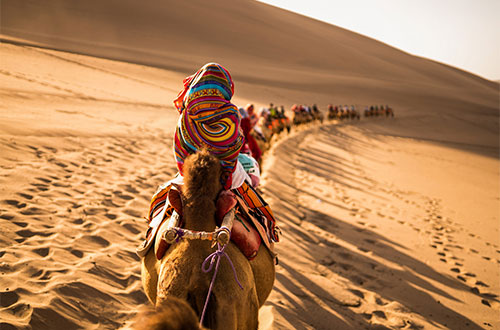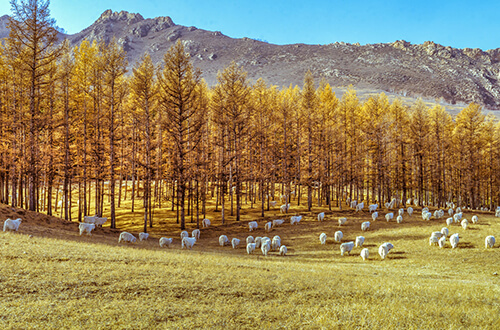
Highlights of Ningxia
CET-NX-1: 5-day Yinchuan - Wuzhong - Zhongwei
Ningxia, a north-central autonomous region in China, is a must-visit destination. It is home to the culturally rich Hui ethnic minority, where visitors can experience unique customs, cuisine, and architecture influenced by both Chinese and Islamic traditions. The region is also known for its numerous historical sites, including the Western Xia Imperial Tombs, Gao Miao Temple, and Helan Shan Rock Carvings, which provide insight into the area's history and its connection to the ancient Silk Road. Additionally, Ningxia offers a variety of outdoor activities such as camel riding, sand sliding, and boat trips, enabling travelers to fully engage with the region's natural wonders.
Trip Highlights
- Western Xia Imperial Tombs: These pyramid-like mausoleums offer a glimpse into the history and artistic achievements of the Western Xia Dynasty (1038-1227).
- Helan Shan Rock Carvings: These ancient carvings, dating back thousands of years, provide insights into the early nomadic tribes that inhabited the steppes north of China.
- Shapotou Scenic Area: A stunning desert landscape featuring sand dunes, the Yellow River, and remnants of the Great Wall, offering activities such as camel riding and sand sliding.
- Qingtongxia Yellow River Canyon: Visitors can explore this picturesque canyon by boat and visit the 108 Pagodas, an impressive collection of Buddhist stupas.
- Baisitan Village Homestay: An authentic homestay experience that allows visitors to immerse themselves in the local culture and lifestyle of a traditional village.

Quality
No Shopping Traps

Group Type
Private

Tour Focus
History, Nature, Desert

Accommodation
Nights:4
Best Season
Spring, Summer, Autumn, Winter
Full itinerary for Highlights of Ningxia
Arrive in Yinchuan either by high speed train or airplane, our guide and driver will pick you up and take you to your hotel. If time permits, Visit the Yinchuan Drum Tower and the Nanguan Mosque.
Overnight in Yinchuan.
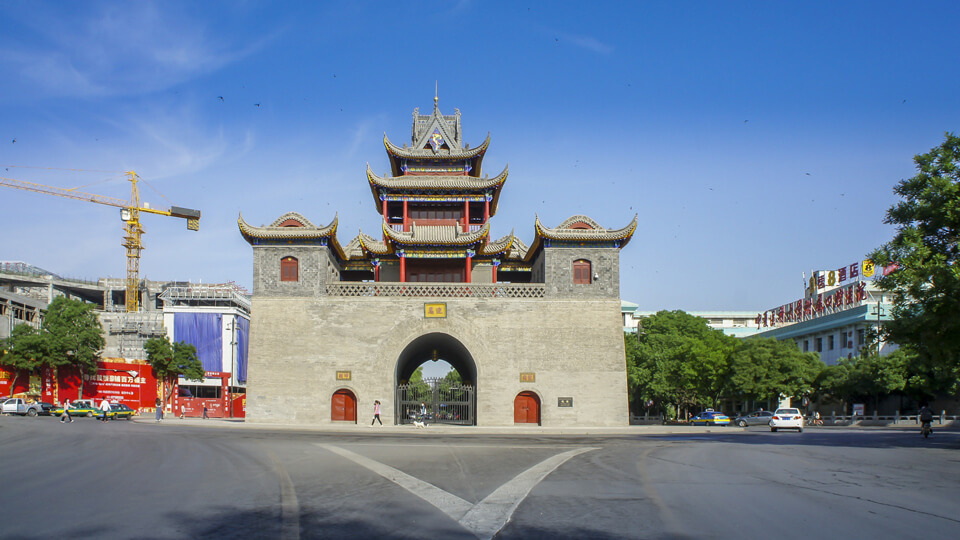
In the morning, we will explore the Western Xia Imperial Tombs (Xixia Wangling) site, often referred to as the "Chinese Pyramids" due to their distinct pyramid-like shape and mysterious atmosphere. These mausoleums exhibit a unique fusion of architectural styles, blending elements from Tangut, Han, and Tibetan cultures. The elaborate designs, stone carvings, and murals within the tombs offer valuable insights into the artistic accomplishments of the Western Xia Dynasty (1038-1227).
Next, we will visit the Helan Shan Rock Carvings, which date back to 1,000-10,000 years ago. These carvings are remnants of the early nomadic tribes that inhabited the steppes north of China.
Afterward, we will head to Zhenbeipu China West Film Studio, also known as "The Hollywood in the East." As one of the most prominent film studios in western China, it offers numerous photo opportunities for visitors to capture memorable moments.
Overnight in Yinchuan.
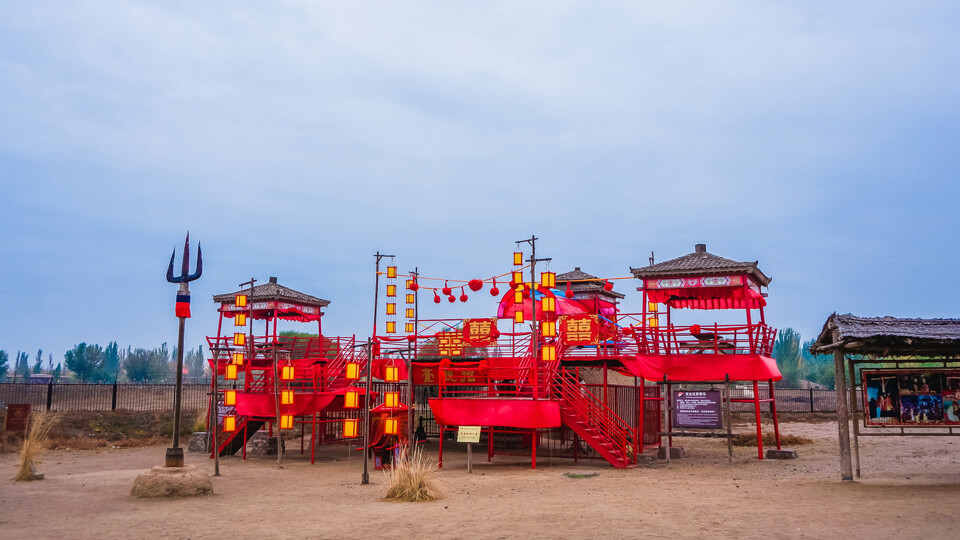
We will embark on a one-hour drive to Wuzhong, located near Yinchuan. Upon arrival, we'll enjoy breakfast at a local restaurant that serves morning tea, a tradition akin to Cantonese dim sum or Western brunch. Wuzhong, once a thriving trade city along the ancient Silk Road, had a population primarily engaged in trade or related businesses. Ningxia locals uniquely serve tea in a covered bowl, similar to a tureen, instead of a teapot. We'll savor Babao cha, or eight treasures tea, a blend of eight ingredients, along with side dishes and popular snacks such as fried dumplings and steamed stuffed buns.
Next, we'll explore the Qingtongxia Yellow River Canyon by boat, visiting the 108 Pagodas—an impressive array of Buddhist stupas—and the Qingtongxia hydro power project. Following our excursion, we'll check into our homestay in Baisitan Village. This village provides guests with an authentic homestay experience, allowing them to delve into the local culture and lifestyle. By staying with a local family, visitors can gain a deeper appreciation of the village's traditions and customs.
Overnight in Wuzhong.

In the morning, set off for Zhongwei and discover the captivating Shapotou Scenic Area, featuring stunning desert landscapes, sand dunes, the Yellow River, and remnants of the Great Wall. If you're up for it, indulge in a camel ride or sand sliding at Shapotou. Next, we’ll take a journey along Zhongwei's 'Route 66', a winding road that meanders through rolling mountains and alongside the Yellow River. This picturesque route has gained popularity for its rugged beauty, drawing comparisons to America's famous Route 66. Finally, explore the Gao Miao Temple, an intriguing blend of Confucianism, Buddhism, and Taoism. Initially constructed in the early 15th century, the temple has been destroyed and rebuilt numerous times during the 18th and 19th centuries. The current structure is a combination of 19th and 20th-century architecture.
Overnight in Zhongwei.
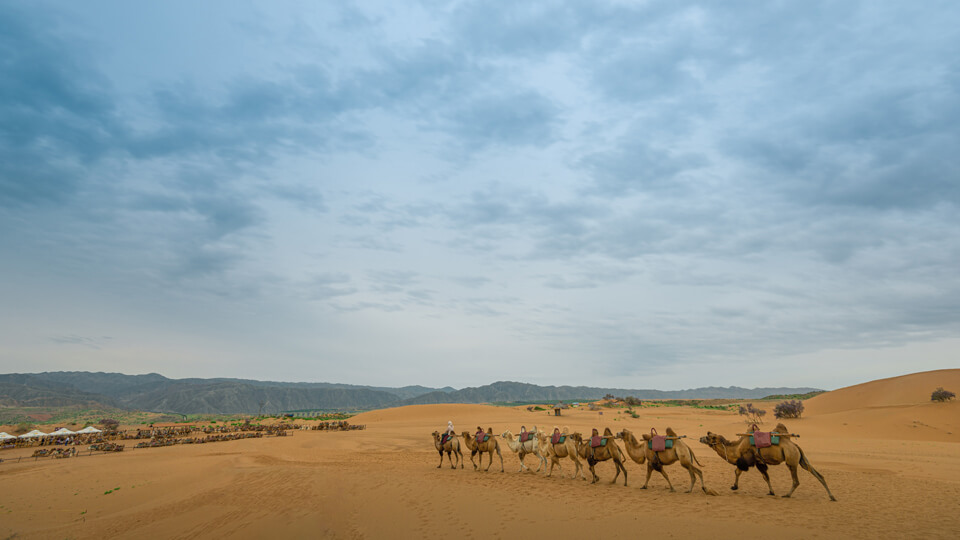
Today, we will explore the renowned Shuidonggou Archaeological Site, celebrated for its well-preserved ancient military defense system, including the Shuidonggou Great Wall, which dates back to the Ming Dynasty (1368-1644). Shuidonggou is also known for its Paleolithic remains, shedding light on the prehistoric human life and culture in the region. At the Shuidonggou Site Museum, visitors can marvel at the numerous artifacts and relics discovered during archaeological excavations, providing a window into the area's rich past.
Afterward, we will transport you to the Yinchuan airport or train station for your departure.
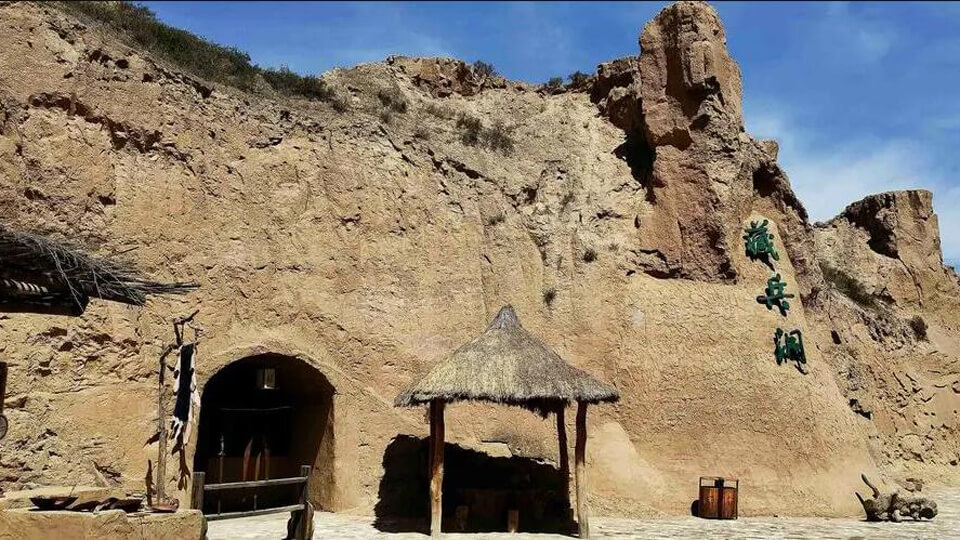
What’s Included
- Expert tour guides who can speak fluent English, Chinese Mandarin and local dialects
- Air-conditioned vehicles for land transportation
- Eight nights’ accommodation in comfortable local hotels with daily breakfast
- Meals as listed
- Entrance fee and cost for activities as mentioned
Wechat & WhatsApp: +86-13471279378

